On every continent, journalists have faced difficulties investigating environmental issues. Since 2009, at least 13 journalists have been killed working on environment-related stories, according to the Committee to Protect Journalists. CPJ is still investigating 16 additional deaths, so there may be as many as 29 cases. Other journalists were forced to shut down their newspapers. Many, constantly under threat, simply can’t work anymore, because they have been forced into hiding or can’t find news outlets willing to risk publishing their stories..
One subject is particularly perilous: documenting environmental damage by the mining industry. Green Blood is a project designed to finish work begun by some of these journalists shut down by the danger inherent in shedding light on one of the darkest and most destructive industries in our global economy.
Through this unique collaboration with 15 media partners, we investigated mining multinationals. We looked into a nickel mine in Guatemala, a gold mine in Tanzania and sand mining in India.
During eight months, we gathered documents, collected testimonies and conducted scientific tests, digging deep into potentially illegal mining activities and their impact on the environment. As a consortium, we shared our skills and knowledge to trace whole supply chains, from the mine to end products consumed by individuals around the world.
By publishing the Green Blood Project all together at the same time in 25 countries, we are once again sending a powerful signal to the enemies of the free press: “You stopped the messenger, but you won’t stop the message.”
A Journalist Pays With His Life
On 01 June 2015, Jagendra Singh, 46, probably knew that dark clouds hovered over him.
Jagendra was drowning in a situation that had gone entirely beyond his control. He had made too many powerful enemies. And they were coming for him.
The previous night he had received a call from the nephew of Samajwadi Party Minister Rammurthi Varma, he had told his family. Anil Varma who had called him when he was in his native village Khutar, sitting on the terrace with his family, asked him for a meeting.
Jagendra prepared to leave but his wife Suman Singh and younger son Rahul Singh stopped him. “Go in the morning, it is very late now and God knows what they will do,” Suman recalled telling her husband. “Those people are dangerous. Why don’t you stop writing about them?” she reiterated.
Jagendra acquiesced. The family recounts that they spent an enjoyable evening together, talking and laughing under the stars.
The next day Rahul dropped his father off at the latter’s Shahjahanpur residence, about an hour and half from Khutar. Rahul had to attend a family function elsewhere.
He had barely reached the relative’s venue when the call came. Panicked and shocked, he came rushing back to his father’s modest rented house in the town.
“The district Superintendent of Police was there,” said Rahul. “The SP’s driver dropped me at the district hospital where they had taken my father.”
The Attack
Jagendra Singh had been admitted to the district hospital with 60% burn injuries. His upper body from the neck downwards up to his abdomen and his arms and hands were all burnt.
The district hospital, ill-equipped to handle burn wounds, referred him to Lucknow’s Shyama Prasad Mukherji Civil Hospital. Rahul, his mother Suman, his elder brother Rajan all went in the ambulance with their father.
At the Lucknow hospital, a District Magistrate arrived to record Jagendra’s statement.
The graphic video recording shows the journalist in terrible pain, giving details of his assailants. Below is the transcript of the recording.
“Jagendra Singh: Five people entered.
District Magistrate: Who?
JS: Sriprakash Rai and five other policemen. First they all beat me a lot. Then the motherf****rs poured petrol on me. They jumped over the wall and got in. If they wanted to, they could have arrested me instead what was the need to kill me?
DM: Who all were there? Tell me the names.
JS: Sriprakash Rai was there and five other policemen were there. Gufran was there.
DM: Who is Sriprakash Rai?
JS: Sriprakash Rai is an inspector.”
A week later, Jagendra who showed signs of recovery, succumbed to his injuries at the hospital itself.
Who Was Jagendra Singh?
A journalist with around 13 years of experience, Jagendra began his journey from meagre means. He was trained as a mechanic, owned a cigarette shop and even tried his hand at running a small food business in Khutar, his native village.
It was in 1999 that he found his calling. Hindi daily Amar Ujala needed someone to distribute newspapers to villages and he offered to report on stories for them in return for a small fee.
Journalism sucked him in. He became district correspondent soon enough with a number of Hindi newspapers – Swatantra Bharat, Jansandesh Times and Khusro Mail among others.
“Since he came into journalism, he loved it,” said Jagendra’s younger son Rahul. Like most families in the area, the children have a given name which is rarely used – shorter versions or altogether different names are used instead.
Rahul Singh’s given name is Pushpendra Singh. His elder brother Rajan in Rajyavendra Singh. The youngest sibling, Diksha is called Rachna within the family.
“Papa (father) lived for writing about other people’s problems and needs. So people were fond of him. Whenever he got information, he would gather proof or take photos and then he would write,” said Rahul.
Jagendra, by all accounts, did not make much of a living. It was not enough to keep the family afloat.
“He would have just 10 rupees in his pocket but he would hand it over to someone who was hungry,” said Jagendra’s wife Suman. “I would keep telling him – you are a man, you have to earn for your family, you have to take care of us. But he always said, money is not a big deal. It is more important to help people.”
The family barely survived on the pension of Jagendra’s now deceased father Sumer Singh, a retired Head Postman who gave his monthly salary of Rs 18,000 to the household. Jagendra, according to his family, managed to provide around Rs 3000 every few months. Some income from a parcel of land helped the family tide over.
Over a period of time, Jagendra had decided not to work with mainstream dailies as they ‘killed’ his exposes and investigative reports. He was wedded to integrity in his chosen profession.
“My father was so honest as a journalist that he published news against his own baba (father),” laughed Rahul. “Baba was in the post office. Some letters were not despatched on time and it had troubled people because they were not receiving their mail. Papa published that news. Baba was upset but Papa still published,” he grinned.
Jagendra decided instead to use the newly discovered medium of Facebook to publish his work. The Shahjahanpur Samachar (Shahjahanpur News) Facebook page came into being. And Jagendra was all set to make a big name for himself.
Or so he believed.
Why Was Jagendra Attacked?
Since April 2015, Jagendra appears to have stumbled across a local source who was a goldmine of information about alleged illegal practices of a powerful Samajwadi Party minister who hailed from Shahjahanpur.
That source, by all accounts, appears to be Devendra Pal Singh, a former MLA of the Samajwadi Party itself, whose position locally had been usurped by Rammurthi Varma.
Varma was the Backward Classes Welfare Minister in the Akhilesh Yadav government at the time and an MLA from Dadraul constituency in Uttar Pradesh.
Armed with information and documents provided by Devendra Pal Singh, Jagendra, who had by then earned the reputation of being a fearless and honest journalist, began to report on Varma’s alleged illegalities.
On 27 April 2015 came the first salvo at Minister Varma. A story that exposed the diversion of rice meant for ration shops to the market. This, according to Jagendra was being done by officials allegedly close to Varma.
The next day, a warning arrived. Jagendra and his friend Raju Mishra were waylaid on the road and beaten up by goons. Jagendra’s ankle was broken in the attack.
The next day he filed a police complaint at the Sadar Bazaar police station at Shahjahanpur, naming alleged henchmen of Minister Varma – Gufran, a medical store owner, one Agni Gupta and one Anshu Gupta.
The complaint did not go very far and the accused remained free.
Unable to bike around as usual since his foot was in a cast, Jagendra would travel with his friend Jitendra Kumar to meet people and write his reports.
In the interim, journalists in Shahjahanpur took sides in the perceived clash between the minister and Jagendra.
Amit Pratap Singh Bhadoriya, another journalist and a former protégé of Jagendra, went over to the minister’s side.
Bhadoriya began abusing Jagendra and his friends on Facebook and when questioned, cried foul, saying his account was “hacked”. He posted slanderous messages about Jagendra and those who supported him.
As journalists targeted by Bhadoriya got riled up, counter-allegations flew on Facebook, calling Bhadoriya a henchman of the minister.
On 09 May 2015, Jagendra hit the publish button once again on his Facebook page – this time the story was on illegal sand mining on the banks of the river Garra which runs through Shahjahanpur. Jagendra alleged that the minister’s nephew Anil Varma was running the illegal business on behalf of the minister.
On 10 May he published yet another story alleging land grabbing by the minister.
The backlash was harsh.
Amit Pratap Bhadoriya’s tirade on Facebook grew. To resolve the problem amicably, a “peace meeting” of sorts was called for by the local press association leaders. Raju Mishra, Jagendra Singh, Jitendra Kumar and some other journalists met Bhadoriya to ask him to stop what he was doing.
Jitendra Kumar told us one version what ensued. “Amit Bhadoriya used (Raju) Mishra’s name to get money from people. He got paid for an article Raju Mishra was writing. Jagendra participated to a meeting to solve the issue between them. The meeting was organised in front of the house of Rajeev Sharma, a journalist running a newspaper called Crime Line. Amit Bhadoriya was drunk and a fight started. Raju Mishra slapped Bhadoriya and the exchange became heated,” he said.
“Rajeev Sharma’s wife was also present. She told Raju Mishra – “Don’t behave badly otherwise we have a gun inside and we will shoot you.” Jagendra stepped in and asked Amit Bhadoriya to leave. He took him to the main road and gave him Rs 50 to get home,” said Jitendra.
Smarting, Bhadoriya went to the Kothwali police station where he filed a complaint of attempted murder against Raju Mishra who slapped him.
According to Jitendra, the FIR underwent a modification two days later. “Amit Bhadoriya went to the police station with a boy named Kamal and filed a complaint against Raju Mishra and Rajeev Sharma. Initially Bhadoriya said Jagendra protected him. There are documents to prove this – that this is the first declaration he made to the police. But Bhadoriya changed his version two days later on 12 May 2015,” claimed Jitendra.
The second FIR in the attempt to murder case, allegedly modified, has Jagendra’s name as the key accused.
Our investigation though has not unearthed the earlier version of the complaint filed by Bhadoriya. Jitendra and other friends of Jagendra insist that there was a version of the complaint without Jagendra’s name in it which was later destroyed by the police.
“Bhadoriya was already close to the minister Varma. Everybody knew it. Varma was angry with Jagendra and asked Bhadoriya to get rid of the first FIR and prepare another FIR,” said Jitendra.
“I got this information from the boy Kamal who confessed to Jagendra a few days later. Kamal says that because of the minister’s pressure, Jagendra’s name was added to the FIR filed by Bhadoriya accusing them of attempt to murder.”
With a foisted attempt to murder case hanging over his head, Jagendra was in deep trouble.
But he would not let things go so easily.
“Papa’s friends used to tell me what he was writing about and that he was taking on the powerful minister,” said Jagendra’s son Rahul. “When I asked Papa about this, he said to me – tell the minister to stop his corrupt activities, then I will stop writing.”
“I used to beg him to stop, after all this happened,” said Jagendra’s wife Suman. “We read about this case against him in the paper. I asked him – how long will you battle? You will always be in danger. You could have an accident at any time. Even though I cried a lot, he would not listen,” she said.
On 18 May, Jagendra wrote to the SP of Shahjahanpur.
“Due to pressure from the minister, the police, without a probe, have registered an FIR and are now attempting to arrest me at my residence.
I request you, in the interests of justice, to ensure that this fake FIR is investigated only by the Shahjahanpur police and not by any other station and to ensure that until the probe is completed, I am not arrested.”
The police did not act on this letter either.
Ironically, a year after Jagendra’s death, the Shahjahanpur police acknowledged that the case of attempt to murder filed against him was indeed false.
On 22 May, he posted a desperate message on his personal Facebook account.
“Rammurti Singh Varma can have me killed. At this time, politician, thugs, and police, all are after me. Writing the truth is bearing heavily on my life. After exposing some of Rammurti Varma’s acts, he had me attacked.”
On 31 May came the final reckoning. A shocker of a story that proved to be the last straw, perhaps, for the minister.
Jagendra Singh wrote that the minister, his henchmen Amit Pratap Bhadoriya, Brahma Kumar Dikshit, Gufran, and Sriprakash Rai had raped an Anganwadi worker Sita Kumar (name changed to protect identity). Sriprakash Rai was then the Inspector of Kothwali police station and allegedly on the minister’s payroll.
To prove his allegation, he referred to an affidavit filed in court on 28 May by the victim and gave out details of the alleged rape and harassment.
On the afternoon of 01 June, at around 02.35 pm, a police team arrived at the rented residence of Jagendra Singh at Awas Vikas Colony in Shahjahanpur.
After this, facts are in dispute.
Jagendra’s Version
At the Civil Hospital in Lucknow, Jagendra told the District Magistrate as well as Inspector General of Police Amitabh Thakur that the police had flung petrol on him and set him ablaze.
“Five-six policemen jumped over the wall and came into the house. And once in the police station they beat me a lot. Then these motherf****rs came to my house and set fire to me. They said to me – you cast allegations of rape on us and on Rammurthi, you motherf****r. Then they beat me a lot and poured petrol on me and set me on fire. They poured petrol on her too – the one who is standing here,” he said in the video.
The ‘her’ he refers to is Sita Kumar, the complainant in the rape case. She too was captured on video describing what happened to the District Magistrate.
She said that she was returning after filing a petition at the SP’s office, requesting protection from those harassing her.
“On way I saw Gufran on a motorcycle along with one person. Behind them was a police vehicle. He asked me to sit inside the vehicle. I didn’t know what it was about. I thought that it might be in relation to my application. They took me to Jagendra’s place at Awas Vikas and Gufran thrashed Jagendra along with a fat policeman whose name I don’t know. Then they pointed the revolver at me and then at Jagendra and poured petrol on us. They set Jagendra on fire and they tried to burn me also but I ran away from there,” she said.
The Police Version
The police said that Jagendra had in fact locked the front door to his house and refused to allow the policemen in.
As a result they had to scale the wall and break open the bedroom door where Jagendra had locked himself in.
Police reports state that Jagendra already had in his possession a bottle of petrol and had self-immolated in an attempt to prevent the police from approaching them.
According to them, Sita Kumar was already at Jagendra’s residence when the police arrived.
On 08 June, Jagendra Singh breathed his last.
The Aftermath
After Jagendra was cremated at his native Khutar, protests erupted. His family and friends sat on dharna at the village, while journalists’ associations in Shahjahanpur, Lucknow and Delhi took up the cause of justice for Jagendra.
A Public Interest Litigation (PIL) was filed in the Delhi High Court as well as the Supreme Court.
Meanwhile, Uttar Pradesh Chief Minister Akhilesh Yadav announced compensation of Rs 30 lakh to the family of the deceased journalist.
The family wanted gun licences for self-defence. This too was given to them by the state and Rahul and Rajan now own rifles.
The family says Yadav promised that he would ensure government jobs for both of Jagendra’s sons. This promise is yet to be fulfilled.
A parcel of land which had been grabbed by local goons was also recovered and handed back to the family. A few years later though, the land was usurped once again by the thugs.
The main demand of the family – to order a CBI probe into the death of Jagendra Singh – never materialised.
IG Amitabh Thakur took a special interest in the case when it hit the headlines and visited Jagendra a few times when he was in the Civil Hospital in Lucknow.
“The point is, when I talk to Jagendra Singh, and the statement which he gave, at that point of time, I talked to his family members and I talked to the policemen. If – given a choice, I would always like to believe that what Mr Singh said about was truer, was nearer to fact than what the policemen said. And to me it seemed that what Mr Jagendra Singh said should have been given a thorough inquiry, should have been given a much closer examination and should not have been left in the lurch the way it actually happened because the case could not be pursued in the manner it should have been,” he said.
In 2016, a number of developments took place.
Journalist Amit Pratap Bhadoriya was found lying dead on the road near Sitapur. His death was termed an accident although journalists in Shahjahanpur suspect he was done in.
Rahul Singh, in whose name a PIL was filed before the Supreme Court, abruptly withdrew the petition without explanation.
Subsequently a document surfaced stating that the family agreed that Jagendra had committed suicide.
So what happened in the interim?
We investigate further in The Green Blood Project.

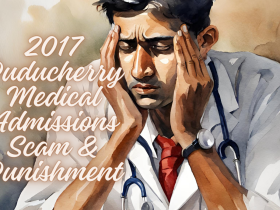


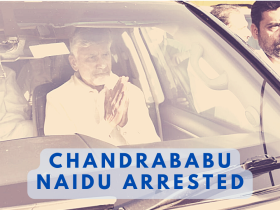
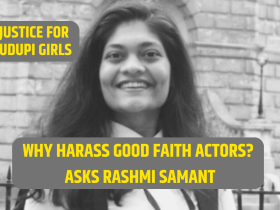
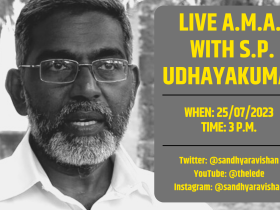
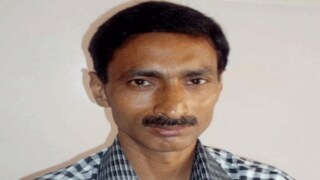
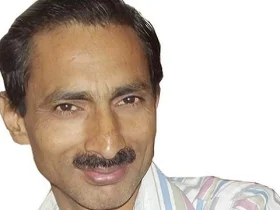




Leave a Reply